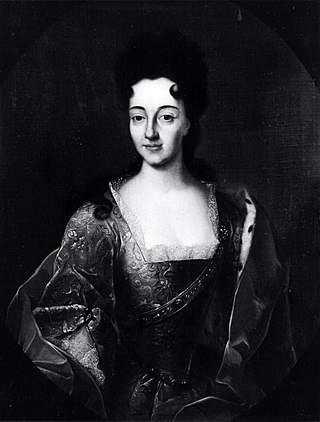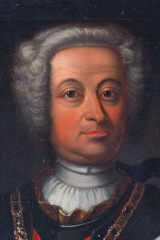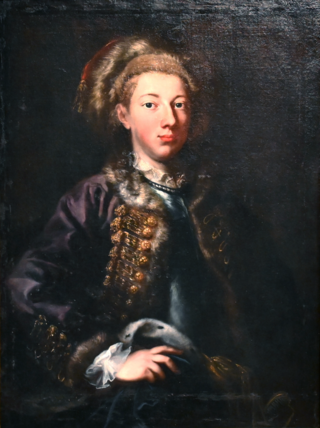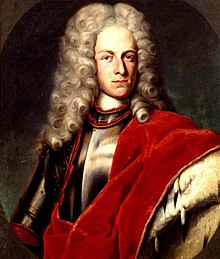
The House of Fürstenberg is an old and influential Swabian noble house in Germany, based primarily in what is today southern Baden-Württemberg near the source of the Danube river. Numerous members of the family have risen to prominence over the centuries as soldiers, churchmen, diplomats, and academics. Sometimes the name is gallicized as de Furstenberg or anglicized as Furstenberg.

Constantine Josef, Hereditary Prince of Löwenstein-Wertheim-Rosenberg, was the eldest son and heir of Charles Thomas, Prince of Löwenstein-Wertheim-Rosenberg and his wife, Sophie of Windisch-Graetz. He died before his father.

Dominic Constantine, Prince of Löwenstein-Wertheim-Rochefort was the fourth and last reigning Prince of the Rochefort line of the House of Löwenstein-Wertheim.
Dominic Marquard, Prince of Löwenstein-Wertheim-Rochefort was the second Prince of Löwenstein-Wertheim-Rochefort.

Löwenstein-Wertheim was a county of the Holy Roman Empire, part of the Franconian Circle. It was formed from the counties of Löwenstein and Wertheim and from 1488 until 1806 ruled by the House of Löwenstein-Wertheim who are morganatic descendants of the Palatinate branch of the House of Wittelsbach.

Ernst II Leopold was Landgrave of Hesse-Rotenburg from 1725 until his death.

Eugen Alexander Franz, 1st Prince of Thurn and Taxis, full German name: Eugen Alexander Franz Fürst von Thurn und Taxis was the first Prince of Thurn and Taxis, Postmaster General of the Kaiserliche Reichspost, and Head of the House of Thurn and Taxis from 13 September 1676 until his death.
Eleonore of Löwenstein-Wertheim was a Princess of the Löwenstein-Wertheim-Rochefort. She was the Landgravine of Hesse-Rotenburg by marriage. Baptised as Eleonore Maria Anna, she was known as Eleonore.

Jacques Léopold de La Tour d'Auvergne was a member of the House of La Tour d'Auvergne, the sovereign dukes of Bouillon. He was the last Duke of Bouillon succeeding his father in 1792.

Princess Eleonore Philippina of Hesse-Rheinfels-Rotenburg was the consort of John Christian, Count Palatine of Sulzbach, whose two children were both by his first wife, Maria Henriette de La Tour d'Auvergne.

Princess Maria Eleonore of Hesse-Rotenburg was Landgravine of Hesse-Rotenburg by birth and was the Countess Palatine of Sulzbach by marriage. She is an ancestor of Albrecht, Duke of Bavaria.

William I was Landgrave of Hesse-Rotenburg from 1693 until his death.

Constantine of Hessen-Rotenburg was Landgrave of Hesse-Rotenburg from 1749 until his death.
Charles of Hesse-Wanfried, was a Landgrave of Hesse-Wanfried. He was the second son of Landgrave Ernest of Hesse-Rheinfels and Maria Eleonore of Solms-Lich.

Prince Charles Thomas Albert Louis Joseph Constantine of Löwenstein-Wertheim-Rosenberg was an Austrian officer during the Napoleonic Wars and from 1814 onwards, a member of the landless high nobility.

Prince William Hyacinth of Nassau-Siegen was a Prince of Nassau-Siegen. He also claimed the Principality of Orange.

Charles Thomas, 3rd Prince of Löwenstein-Wertheim-Rochefort was from 1735 to 1789 the third Prince of Löwenstein-Wertheim-Rochefort.

Charles Albert II, Prince of Hohenlohe-Waldenburg-Schillingsfürst was the 3rd Prince of Hohenlohe-Waldenburg-Schillingsfürst from 1793 to 1796.















